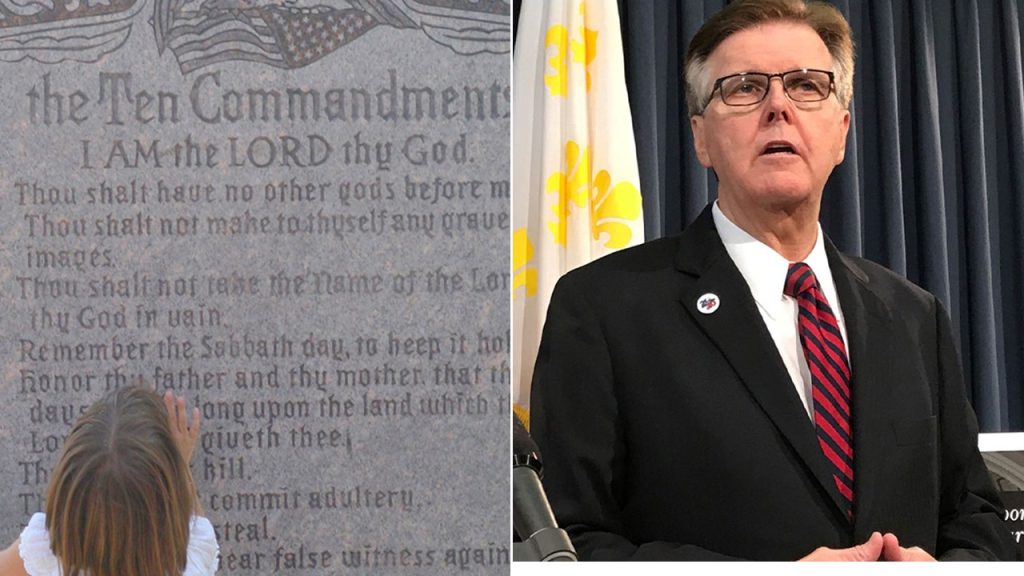Texas Lt. Gov. Dan Patrick has pledged to pass a bill that would require public school and college classrooms in Texas to display the Ten Commandments. He criticized Texas state House Speaker Dade Phelan for killing a previous state Senate bill that would have mandated the display of the Ten Commandments in schools. Patrick vowed to bring the measure back, stating that it would help recognize America’s heritage and remind students of the foundational role the Ten Commandments play in American and Texas law. Currently, there is no requirement for Texas public elementary and secondary schools to display the Ten Commandments in classrooms. Phelan and Patrick have had conflicts before, with Patrick presiding over the impeachment trial of Texas Attorney General Ken Paxton earlier this year.
This week, Louisiana became the first state to require the Ten Commandments to be displayed in public school classrooms. The American Civil Liberties Union and other civil rights groups have announced their intention to challenge the law, citing concerns about the coercive effect such displays may have on children and the diverse religious landscape of the United States. Notre Dame Law School Professor Richard W. Garnett stated that it is likely other states may attempt to enact similar measures, although the legality of such requirements remains to be seen. The Supreme Court will likely have to consider whether displaying the Ten Commandments in classrooms violates the separation of church and state and infringes on individuals’ religious freedom.
The ACLU and civil rights groups have strongly opposed Louisiana’s Ten Commandments law, arguing that religion is a private matter and should not be imposed by politicians on students and families in public schools. They emphasized the importance of individuals being able to decide for themselves what religious beliefs to hold and practice without government interference. Critics of these types of laws also point out the religious diversity of the United States and the need for public schools to remain inclusive of all beliefs, rather than promoting specific religious doctrines. It is expected that challenges to laws mandating the display of the Ten Commandments in schools will continue to be brought forward in courts, as the debate over the separation of church and state persists.
The controversy over displaying the Ten Commandments in public school classrooms raises questions about the balance between preserving religious freedom and preventing government promotion of religious beliefs. Critics argue that such displays can have a coercive effect on children, given their age and the environment in which they are presented. Supporters, however, contend that recognizing the role of the Ten Commandments in American and Texas law is important for educating students about the country’s history and values. The Supreme Court will likely play a crucial role in determining the constitutionality of these laws and how they align with the principles of church-state separation and religious freedom.
The clash between proponents and opponents of displaying the Ten Commandments in public school classrooms highlights the ongoing debate over the role of religion in the public sphere. While some argue that acknowledging religious principles like the Ten Commandments is essential for preserving American heritage and values, others contend that such displays infringe on individuals’ rights to religious freedom and may exclude those of different faiths or beliefs. As more states consider enacting similar laws, the issue of balancing religious expression with government neutrality on matters of faith will continue to be a contentious and complex legal and constitutional issue in the United States. The outcome of legal challenges to these laws will have significant implications for how the intersection of religion and public education is navigated in the country.


